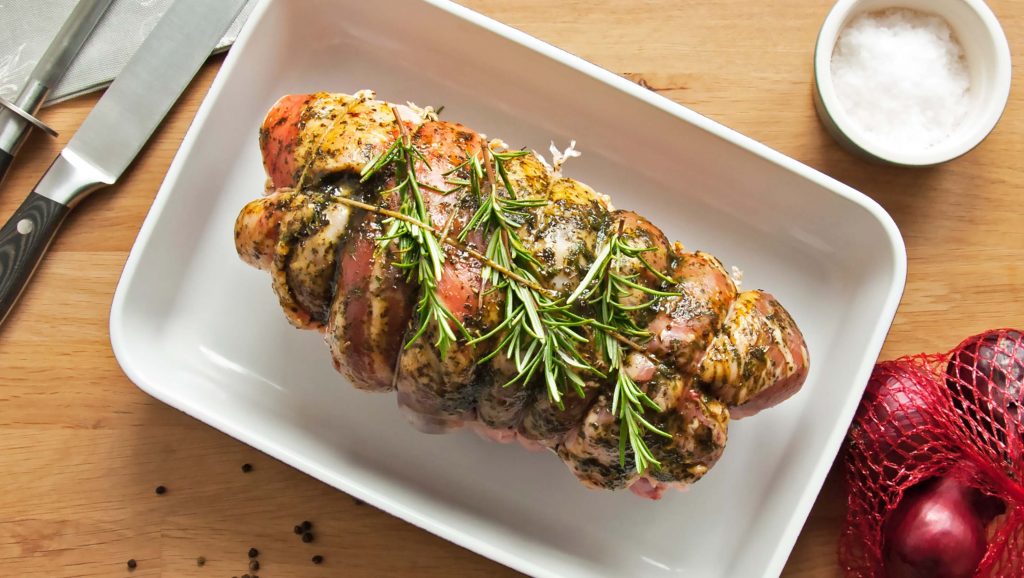It’s highly likely that as you are reading this while sitting in the office or standing in a queue, you are surrounded by the fragrance of our time: hand sanitiser (while breathing through a mask). These past two years have instilled a healthy obsession with personal hygiene and sanitation in most of us and, consequently, consumers are asking the right questions when it comes to food safety and hygiene in the kitchen. Here’s a quick rundown of everything you need to know surrounding the safety of lamb and mutton meat, from farm to freezer to fork.
On the farm
You can’t talk about meat safety without going back to where your meat comes from: the farm (yes, a farm, not the supermarket freezer!). The Red Meat Producers Organisation of South Africa and The National Emergent Red Meat Producers’ Organisation strongly believe that meat quality and safety starts with the way livestock are handled, and therefore they have a code of best practice that producers must adhere to when it comes to farming with cattle and sheep. Find this code of practice here.
At the abattoir
All meat sold commercially in South Africa has to come from a registered and audited abattoir. South African abattoirs must adhere to very strict safety and hygiene regulations and they get audited regularly by the South African Meat Industry Company (SAMIC) to make sure meat from these facilities is safe for human consumption.
In store
Bacteria are live organisms and thrive when certain things are present in the environment. If meat isn’t kept at the right temperature and if it is exposed to oxygen, the risk of bacteria growing and spoilage occurring increases rapidly. So, make sure the lamb you buy is cooled and packaged properly (preferably vacuum sealed if it has been marinated or stuffed, which increases the risk). Always check expiry dates on the packaging and if you detect any broken packaging, foreign objects or foul odours or colours in the meat alert the store or butcher immediately. If you are unsure of what a certain classification, quality indication mark or claim on the packaging means you can look it up on SAMIC’s website. SAMIC is assigned by the National Department of Agriculture Forestry & Fisheries to audit Quality Indication Marks on behalf of them on farms, at abattoirs, feedlots, deboning plants and outlets to protect consumers against any false claims.
Just like at store level, one needs to control the environment in which you handle meat at home and make it unfavourable for bacteria to thrive. Here are some tips to follow at home to make sure your lamb meat stays safe and hygienic:
- Clean hands and surfaces are key when preparing meat. Have a designated chopping board for cutting raw meat.
- Limit the time raw and cooked meat is kept in the temperature danger zone (between about 5 and 60°C) – the rule of thumb here is to “keep hot meat hot and cold meat cold”.
- It is generally safe to cook lamb medium-rare, to an internal temperature of 63°C, given it was handled correctly throughout the entire supply chain as discussed above.
- Don’t use the leftover juices that the raw meat marinated in as a sauce after cooking. Rather use it as a basting during cooking to make sure any possible bacteria from the raw meat juices can be eliminated.
- Raw lamb can be refrigerated for about five days, if the expiry date has not been reached.
- Cooked lamb can be refrigerated for up to two days, if it was cooked well, wasn’t left uncovered and wasn’t exposed to room temperature for more than 20 minutes.
- Raw lamb can be frozen for six months in a upright freezer and no longer than a year in a deep freezer.
- Cooked lamb should not be left frozen for longer than three months and it should be wrapped and covered properly to prevent freeze burn.
- When reheating lamb, make sure it reaches an internal temperature of at least 63°C (about two minutes in the microwave) and then consume it within 20 minutes!
For more recipes, facts and tips for cooking with lamb, visit www.cookingwithlamb.com or @cooking_with_lamb on Instagram.
Supported by the Red Meat Industry of South Africa.

